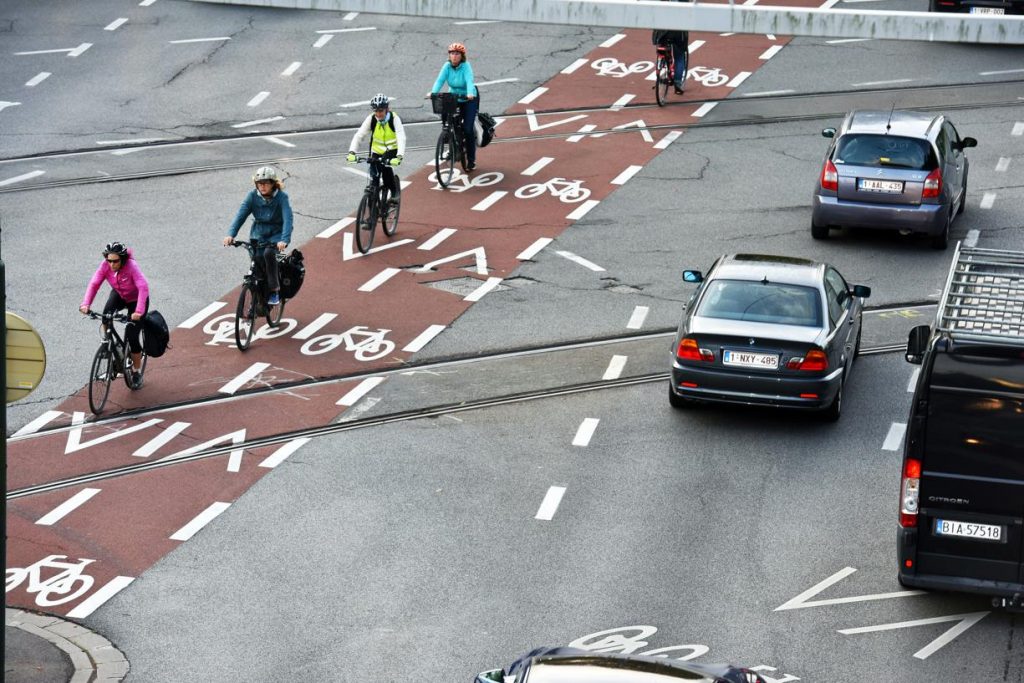The EU institutions adopted on Wednesday the European Declaration on Cycling to reduce pollution, promote good health and transform urban transport.
The declaration was signed by Adina Vălean, Commissioner for Transport, Karima Delli, Chair of the Transport Commitee of the European Parliament and Georges Gilkinet, Deputy Prime Minister of Belgium.
The European Parliament adopted a resolution on developing an EU cycling strategy in February 2023. In 2022, six EU member states prepared a European Cycling Declaration, which has so far been signed by the majority of countries.
This time, the declaration which lists a number of voluntary commitments, has been signed by all EU member states. The Commission describes it as a joint political commitment and a strategic compass for existing and future policies and initiatives related to cycling.
"We recognise cycling's myriad benefits: it reduces pollution, eases urban congestion, and promotes healthier lifestyles,” commented the transport Commissioner. “Moreover, cycling is a cornerstone of the European industry, driving innovation and growth while creating high-quality local jobs. Embracing cycling aligns with the EU's industrial strategy and its objectives."
The comprehensive document describes cycling as one of the most sustainable, healthy and efficient forms of transport for achieving the EU’s climate, zero pollution and energy efficiency objectives, with considerable potential to support the decarbonisation of urban transport.
Cycling comprises a broad and dynamic range of human-powered road vehicles, including bikes for various terrains, cargo bikes, bikes for transporting children, bikes for people with disabilities, trikes, recumbent bikes, velomobiles, tandems, e-bikes and bike trailers.
They cater for a wide range of transport and mobility needs and require appropriate infrastructure. Cycling is playing an increasingly important role in the urban transport of goods, in particular parcel deliveries and shopping, thanks to cargo bikes and alike. In order to reach the full potential of cycling, cycling policies should reflect this diversity.
Furthermore, cycling improves social inclusiveness, contributing to people’s physical and mental health and well-being. It is a moderate physical activity that reduces health risks and premature deaths linked with sedentary lifestyles.
Safe cycling key

The planned wooden bicycle bridge at the Vierarmen intersection in Tervuren, credit: Construction company
E-bike are increasingly popular and allow people to cover longer distances, meet the mobility and transport needs of families, small and medium-sized enterprises (SMEs), and reach additional groups, such as older people and persons with disabilities or reduced mobility. Safe cycling is key for encouraging people to cycle.
A safer infrastructure includes separated cycle paths and secure parking. Integrated safety plans should apply to both cycling and to motorised vehicles and drivers sharing the road with cyclists. This includes safe speeds, safe road use and safe vehicles, underpinned by the strong enforcement of road traffic rules. Developing standards for cycling lanes would increase design-embedded safety for new cycling.
To that end, the EU member states commit to improve road safety and work towards the target of halving the number of fatalities and serious injuries in the EU by 2030 from the 2020 baseline. In a recent audit report, the European Court of Auditors warned that that the EU and its member states are set to miss the road safety goals by 2030.
A cycling enthusiast and former Commission official told The Brussels Times that he very much welcomed the declaration. Himself a Dutch national, he highlighted the cycling policy in his home country. “Everybody rides on a bicycle here. Because of all the cycle paths, it’s safe even for children and elderly people. It brings our densely populated cities back to a human scale.”
He thinks that the e-bike is a real game changer. “With such a bike everyone can ride the hills of Brussels. An e-bike weights 25 kilo and can transport an 80-kilo heavy person up to 100 km.”
The new cycle bridge over the Ring at the Vierarmen intersection in Tervuren is a good example of the new cycling policy in Brussels and its surroundings. The bicycle and pedestrian bridge consists entirely of wood and is expected to be finalized in the coming weeks. It is the first wooden bicycle bridge of such a size in Flanders.
Cycling is increasingly becoming an even more popular mode of transport in Brussels, in part as a result of improved infrastructure. The number of cyclists on Brussels roads increased by 7% in 2023, according to an estimate by Brussels Mobility.
In order to reach its full potential, cycling needs to be properly addressed in mobility policies at all levels of governance and funding, transport planning, awareness raising, allocation of space, safety regulations and adequate infrastructure, the declaration summaries.
M. Apelblat
The Brussels Times

